Police Brutality Controversies
Confirmed 22,498
Overview
Police Brutality Controversies refer to incidents in which police officers are accused of using excessive force, often involving allegations of racial bias as a motivating factor.
Background
Beating of Rodney King
On March 3rd, 1991, taxi driver Rodney King III[1] attempted to escape officers while driving on the Foothill Freeway in the San Fernando Valley of Los Angeles, California with two passengers in his vehicle. After eight miles of high-speed pursuit, King's vehicle was cornered by police officers. After leaving his vehicle, officers claim King was acting strange by patting the ground and waving to a police helicopter. Police Officer Melanie Singer claims that she assumed King was reaching for a weapon when he grabbed his buttocks, leading her to draw her pistol and order King to lay on the ground. LAPD Sergeant Stacey Koon subsequently ordered officers to holster their weapons and handcuff King. After King resisted, officers beat King with batons, which was videotaped by local witness George Holliday (shown below). The footage was broadcast by the local news station KTLA, subsequently igniting outrage across the United States with many claiming the incident was racially motivated. On April 29th, 1992, a jury acquitted three of the officers of any wrong doing. Following the acquittal, riots erupted across Los Angeles, resulting in widespread looting, arson, assault and murder.[2]
Shooting of Amadou Diallo
On February 4th, 1999, 22-year-old Amadou Diallo, an immigrant from Guinea, was shot and killed by New York City Police Department (NYPD) officers while outside his apparent in The Bronx. The four plain clothes officers claimed they approached Diallo because he fit the description of an armed serial rapist. After Diallo took his wallet out of his jacket pocket, the officers mistook the object for a gun, shooting him 19 times. Following the incident, Diallo's family filed a lawsuit against the city of New York for negligence, wrongful death and racial profiling. In March 2004, the family accepted a settlement for $3 million.
Notable Developments
Tasing of Andrew Meyer
On September 17th, 2007, Senator John Kerry gave a speech at the University of Florida as part of the Constitution Day forum organized by the school’s student government.[1] Nearing the end of the event, undergraduate student Andrew Meyer[2] walked up to the microphone stand and criticized Kerry for evading his questions. Meyer pushed his argument to the point in which school officials shut off his microphone. Meyer was eventually forced away from the area by police and tasered repeatedly while he screamed, "Don’t tase me, bro!"
UC Davis Pepper Spray Incident
On November 18th, 2011, a group of students at the University of California Davis gathered on campus for an Occupy protest, during which they formed a human chain by linking their arms together. When they refused to comply with the police request to leave, UC Davis Police officer Lieutenant John Pike and another officer walked across the the group, administering orange pepper spray straight down the line of unmoving students.[17] After a video of the incident was leaked online, Pike was subsequently referred to as "Pepper Spray Cop".
Hawthorne Dog Police Shooting
On June 30th, 2013, a 2-year-old Rottweiler dog was shot by police officers during the roadside arrest of owner Leon Rosby in Hawthorne, California. A video of the incident was subsequently leaked online, sparking widespread outrage for the death of the animal.
Shooting of Michael Brown
On August 9th, 2014, 18-year-old Michael Brown[1] was fatally shot by police officer Darren Wilson in Ferguson, Missouri. Brown was unarmed at the time of the shooting. On August 10th, Jon Belmar, the police chief for St. Louis County, stated that Brown was shot after assaulting a police officer and attempting to gain control of officer’s gun. Belmar also announced the launch of an internal investigation about the shooting per request from Ferguson’s police chief. On November 24th, 2014, county officials revealed that a grand jury had decided not to indict Wilson, which subsequently ignited a wave of protests and riots across Ferguson.
Death of Eric Garner
On July 17th, 2014, Eric Garner[1], a New York City father of six children[8] and a 400 pound asthmatic man, was put into a choke-hold after apparently breaking up a fight outside a local storefront in Staten Island. Five NYPD officers surrounded the father and then forced him onto the ground, while the man continually shouted “I can’t breathe.”[2] Eric Garner died shortly thereafter. On the following day, a video clip of the police action at the scene taken by Taisha Allen was uploaded to YouTube.
Shooting of Akai Gurley
On November 20th, 2014, 28-year-old Akai Gurley was shot and killed by a stray bullet accidentally fired by NYPD officer Peter Liang. Due to the incident's occurrence near the deaths of Michael Brown and Eric Garner, it was widely covered by news media. On February 10th, 2015, Liang was indicted by a grand jury for the shooting and was suspended from duty without pay. If convicted of manslaughter, Liang faces a sentence of up to 15 years imprisonment.
Shooting of Tamir Rice
On November 22nd, 2014, 12-year-old Tamir Rice was shot in Cleveland, Ohio by police officers who mistook his Airsoft replica gun as a dangerous firearm. The entire incident was caught on tape. On December 28th, 2015, the District Attorney of Cleveland announced that the police officers would not be indicted for the killing.
Shooting of Walter Scott
On April 4th, 2015, Walter L. Scott, a 50-year-old Coast Guard veteran and father of four children, was stopped by North Charleston Police Department Officer Michael T. Slager for having a broken taillight on his vehicle. According to the police reports, Scott fled from the routine stop, prompting the officer to chase him into a lot where he first attempted to subdue him with his electronic stun gun, which proved to be unsuccessful, then resorted to fire his weapon eight times, five of which struck Scott. Meanwhile, the shooting was captured on video by a bystander and provided to The Post and Courier and the New York Times for publication on April 7th.
Death of Freddie Gray
On the morning of April 12th, 2015, Baltimore resident Freddie Gray was arrested and taken into custody by the Baltimore Police Department for possession of a switchblade knife. The scene of his arrest was captured on video footage by two bystanders, which shows Gray being carried into the van by multiple officers. According to the police report, within 30 minutes the arrest, Gray suddenly fell into a coma while being transported, prompting the attention of paramedics before he was taken to the University of Maryland’s R. Adams Cowley Shock Trauma Center, where it was discovered that he had sustained severe injuries to his spinal cords and larynx. In the following week, Gray remained unconscious and underwent extensive surgery; on April 19th, a week after his arrest, Gray was ultimately pronounced dead. On April 25th, thousands of Baltimore residents participated in a protest march, during which a small contingent of demonstrators began throwing rocks at police officers and damaging vehicles. Over the next week, the situation escalated with widespread rioting across the city.
Related Memes
Fuck the Police
"Fuck The Police" (sometimes spelled Fuck Tha Police) is a catchphrase commonly used in times of contempt for authority figures and/or general disregard for public opinion in similar vein to the expression Haters Gonna Hate.
Hands Up, Don't Shoot
"Hands Up, Don't Shoot" is a slogan closely associated with the anti-police protests in the aftermath of Michael Brown’s Death in Ferguson, Missouri.[1] The phrase is meant to illustrate the circumstances of Brown’s death as initially reported in the news media and later in the grand jury testimony, during which Brown declared that he was unarmed and told Darren Wilson, the police officer involved in the shooting, to “stop shooting” with his hands raised.
Walking While Black
"Walking While Black" is an expression referring to the racial profiling of black pedestrians using a play on words derived from the United States criminal offense of driving while intoxicated. Variations of the phrase include “driving while black,” “learning while black,” “shopping while black” and “eating while black.”
Criming While White
#CrimingWhileWhite is a Twitter hashtag associated with alleged confessions of White Americans who have been excused from arrest after breaking the law. The anecdotes are meant to illustrate the widely perceived racial bias in police culture, especially the stark contrast between how the blacks and whites are treated by the law enforcement.
Search Interest
External References
[1] Wikipedia – Rodney King
[2] Wikipedia – 1992 Los Angeles Riots
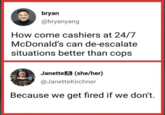
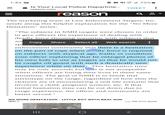

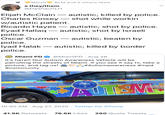










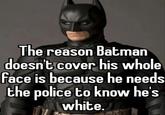
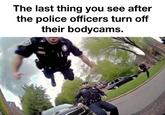


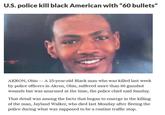

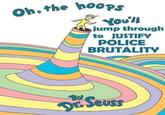

Comments ( 76 )
Sorry, but you must activate your account to post a comment.
Please check your email for your activation code.